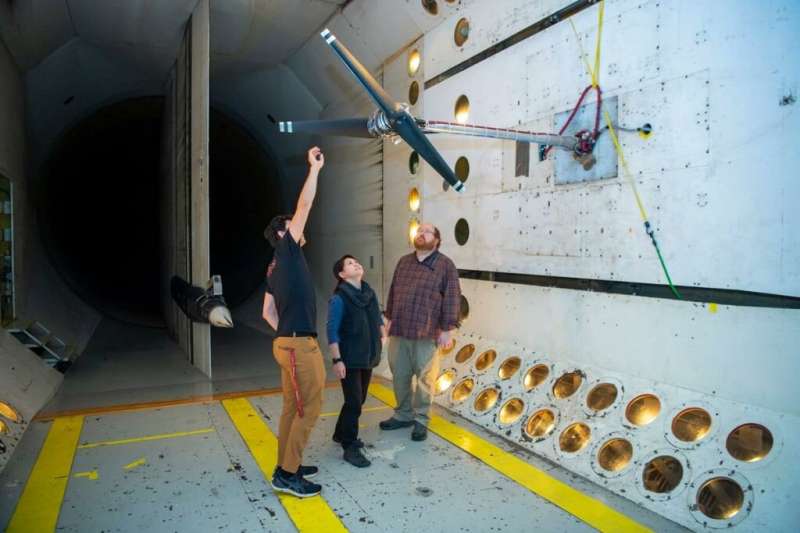NASA is continuing to build the Titan Dragonfly helicopter, with a focus on its rotors

Ingenuity, the helicopter assisting NASA's Mars Perseverance rover on its mission, has been a huge success. It gathered the achievement of the first controlled flight on another heavenly body, has performed spectacularly over its 28 flights and holds records for both speed and distance. But it might not for long, as a much bigger, more capable helicopter is currently under development. And when it eventually explores Titan in the next decade, it has an excellent chance to smash many of Ingenuity's records
That helicopter, known as Dragonfly, is currently still in development on Earth. But, it achieved a significant milestone recently by completing the testing of its rotor blades at a unique testing chamber located at NASA's Langley Research Center.
The Transonic Dynamics Tunnel (TDT) differs from a standard wind tunnel in several ways. Most helpful in this case is its ability to use gases other than just Earth-normal air. In the case of Dragonfly's test, the TDT filled itself with a heavy gas meant to mimic Titan's nitrogen-heavy atmosphere.
In that environment, the rotors were twisted, turned, sped up, and slowed down. In some tests, one of the two rotors that make up one of Dragonfly's four coaxial pairs (for eight rotors in total). This was meant to mimic a potential failure scenario where one (or more) of the rotors don't work.
Dragonfly should be able to get along without several of its rotor blades being operational, making it much more robust than its smaller predecessor. In fact, the issue that will eventually kill Ingenuity (lack of electrical power) won't be as much of a problem for Dragonfly, as it uses a radioisotope thermal generator rather than a set of solar panels on its smaller predecessor.
In order to fulfill that promise, though, the rotors have to work well enough to allow Dragonfly to fly on another world, which is what the testing at the TDT is for. In the chamber, sensors, such as accelerometers and pressure sensors, were added to the rotors under test. Their data was used to validate computational fluid dynamic (CFD) models of how the rotors would perform.
Some of the CFD models used to simulate the stresses and strains on the rotors were initially developed to work with wind turbine farms. However, the data from the TDT matched those models used to design Dragonfly well, which suggests that the rotors should be able to withstand the challenging environment on Titan's surface.
It's a good thing, too, because the craft they have to hold up is massive. Sizing up to be about 12 ft long and 12 ft wide, Dragonfly looks like a typical terrestrial drone on steroids. Its eight rotors will allow it to hop from one place to another on the planet's surface, allowing it to collect data at various sites on the shrouded moon.
That mission goal is still a long way off, though, as rotor testing is a very early step in the overall test program that the project will undergo. But the designers and engineers still have some time until the launch window of 2027. And even more time until the craft finally arrives at its destination in 2034. Until then, there is plenty more testing to do.
Provided by Universe Today
No comments:
Post a Comment